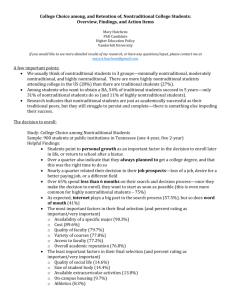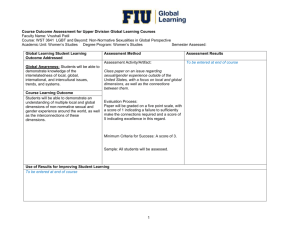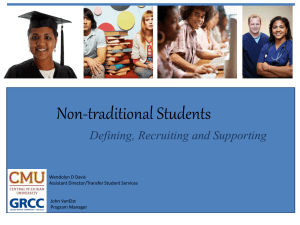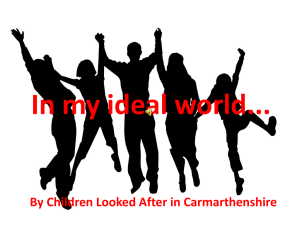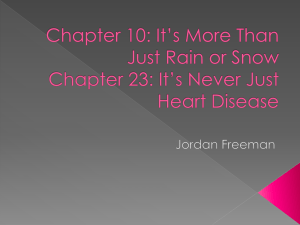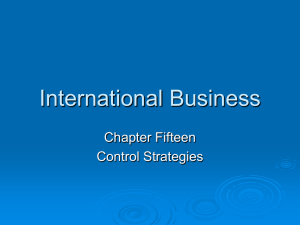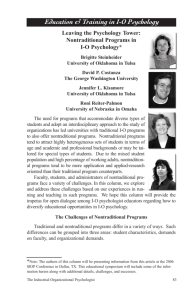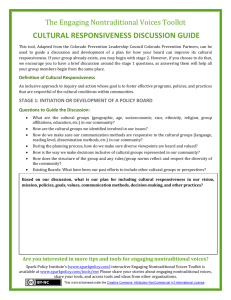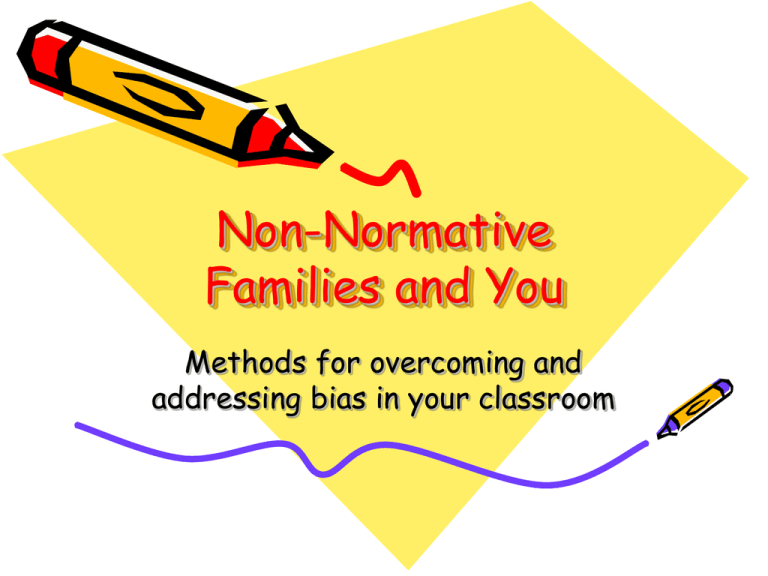
Non-Normative
Families and You
Methods for overcoming and
addressing bias in your classroom
“Nontraditional?”
• Let’s define nontraditional in terms
of non-normative.
• By labeling a family as
“nontraditional, this serves to
further perpetuates inequality within
your classroom.
Normative/Traditional
Family
• Any family that
depicts a
heterosexual, middle
class, Caucasian,
nuclear, two parent
household.
• The hegemonic mold
that instills family
values and norms.
Non-Normative Families
• All families that do
not fall under the
“normative”
definition.
• Most of us and our
future students
may have a hard
time fitting into
this rigid mold.
Define: Family
• “Any group of individuals that forms
a household based on respect, the
meeting of basic needs, as well as
those of love and affection, and one
in which assistance is freely given to
maintain social, spiritual,
psychological, and physical health”.
– Schwartz, ERIC 1999
Types of Non-Normative
Families
• Non-English
speaking families
• Multiracial families
• Families with gay
or lesbian parents
• Foster and
homeless children
• Extended family
members as
caregivers
• Single/Step
parented families
• Underclass families
and the working
poor
Foster and Homeless
Children: Learning to
teach the invisible child
Stigma of Invisibility
• Life of uncertainty
• Physical and
emotional
deprivation
• Lack of social skill
development
• Unwanted guest
phenomenon
• Not enough
“tracking”
• Different
perception of
reality
Addressing the Issue
Be careful of:
• “Family days”
• Family trees
• Genealogy
assignments
• “Me” boards
• Name differentia
• Monetary issues
• Parent volunteers,
field trips, etc
• Homework folders,
family assignments
• Keeping it private
What you can do
• Acknowledge the
invisible children
• Take a sense of
urgency in
addressing needs
• Have (or be) an
education liaison
for child
• Engage school
counselors
• Education passport
• Revise disciplinary
issues
• Have a plan for
enrolling foster
children
Multi-Racial Families
• “Comprises both children whose
families have different ethnic
heritages and those who themselves
are different ethnically from their
parents”.
– Schwartz 1999
What you can do
• Promote positive
development
• Seeing children as
unique
• Learn and honor
how the family
wants the children
to be identified.
Non-English Speaking
Families
• This may be the most challenging
because the ability to communicate
may be hindered by cultural barriers.
What You can Do
• Use your ELL
teachers
• Translate your
newsletters if
possible
• Try to become
minimally fluent
• Encourage
discussion of
native cultures and
language
• Use student’s
experiences for
enrichment
Gay and Lesbian Parented
Families
• Refrain from publicly
asking specific
questions
• Use terms like “coparent” or even just
parent
• Provide classroom
resources that reflect
family diversity
• Give families the
opportunity to provide
information
• Never, never ask the
child who is “mom” or
“dad” when referring
to a same sex
relationship
Single Parent Households
• FHH: number one
leader in poverty
level households
• More independent
• More responsibility
• One or two homes
• May feel closer to
one parent
• Feeling “caught in
the middle”
Working Poor Families
• Understand and
know who these
students are
• Have alternatives
– School supplies
– Field trip money
– Lunch/Breakfast
• Be discreet
• Give your
assistance
• Give family options
and information
– Free/Reduced
Lunch
– Eblen Foundation
Extended Family
Members as Caregiver
• Depends on who is
caregiver
• Less connection to
“parental family
units”
• Inability to feel
assimilated into
classroom norm
Anti-Biased Curriculum
• Defined as a curriculum that “seeks
to nature children’s potential by
addressing issues of diversity and
equity in the classroom.”
– Hohensee and Derman-Sparks 1993
Implementing an AntiBias Curriculum
• Teach more content to
these children
• Demand critical
thinking
• Challenge societal
views
• Build on children’s
strengths
• Capitalize your
teachable moments
• Use children’s
experiences to
connect with school
knowledge
• Respect children’s
home culture
• Foster children’s
connection to
community
Resources
• UNCA Key Center
• Guide to literature for NonTraditional families
– www.cyfernet.com/parent
– www.mayasmom.com
• United Way Services
– www.irisoft.com/ashe/
Sources
• ERIC Documents:
–
–
–
–
–
ED351146
ED495500
ED434188
EJ412905
EJ736693




